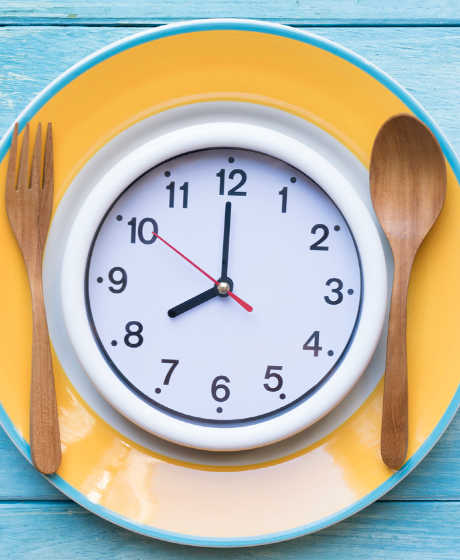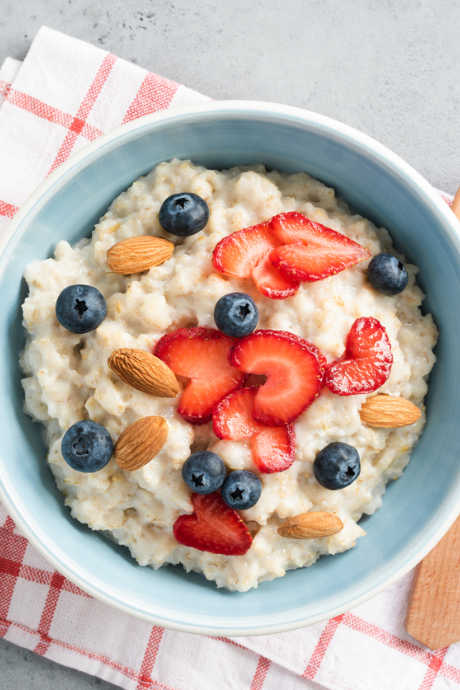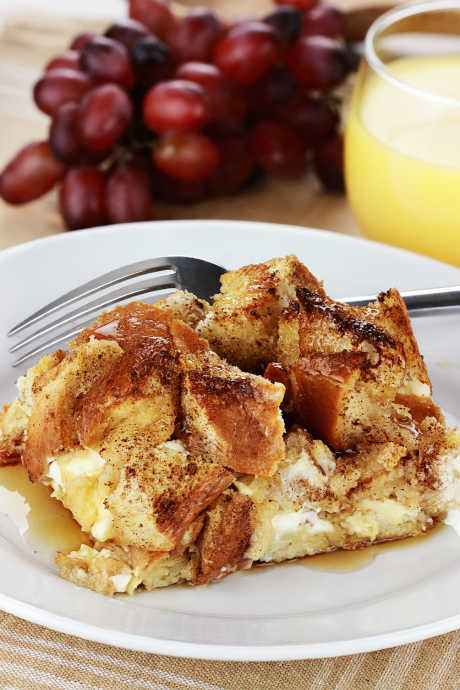Slow Cooker Breakfasts: Set It and Forget It
Posted by Julie on Apr 11th 2019
We have mornings where it’s a challenge to count the number of coffee scoops we’ve added to the filter, let alone put together a hot breakfast. We’re also not fans of turning on the stove or the oven any more than necessary during the warmer months of the year. Fortunately, we’ve discovered the beauty of using our slow cooker in the summer, and now we’re exploring how to use it for breakfast too.
Why Make Breakfast in the Slow Cooker?
No-cook breakfast options are summer standbys, because who wants to hover over a simmering pan of oatmeal or a popping skillet of bacon when it’s not even nine o’clock and the sun is already blazing? But there’s something about a hot breakfast that’s far more satisfying than a bowl of cold cereal or yogurt with granola. When you’re up before the sun or you have a long strenuous day ahead (or both!), a hot breakfast can be a more substantial start.
Your slow cooker is an ideal way to wake up to a hot breakfast without creating excess heat in your kitchen. When you turn on your slow cooker before bed, your kitchen is probably fairly cool. By the time you get up and turn off your slow cooker, neither it nor the sun will have heated up your kitchen appreciably. You can enjoy a hot breakfast without ever turning on your stove or oven.
Do These Recipes Really Cook Overnight?
That’s the important question. We combed through dozens of recipes that were billed as overnight slow cooker breakfast recipes, and very few of them actually met our criteria for “overnight.” If we pop some ingredients in the slow cooker at ten-thirty at night, we don’t want to set the alarm for three-thirty in the morning to get out of bed and turn off the slow cooker. Likewise, we aren’t going to get up at three-thirty to start the slow cooker so we can have breakfast at eight-thirty. No breakfast recipe is worth sacrificing a good night’s sleep.

That’s why we’re featuring these three recipes. They met our criteria for “overnight” -- meaning they cook for eight hours. They’re also straightforward, thoroughly tested, and easy to assemble. Like all recipes, they may require a little tweaking based on conditions like heat and humidity, and the temperature of your slow cooker can make a big difference in cooking time. But once you get the hang of these three recipes, you can swap out ingredients and make a wide variety of different breakfasts.
Slow Cooker Breakfasts: Oatmeal
The Kitchn describes this oatmeal as “creamy,” though oatmeal haters might choose the word “mushy” instead. As oatmeal lovers ourselves, we think it sounds wonderful. Unlike steel cut oats, whole rolled oats don’t hold up overnight. Add fresh fruit and nuts to each bowl before serving to vary the texture. Try raspberries or blueberries, along with chopped pecans or almonds.

If your slow cooker has a timer, just work backward from the time you want to serve breakfast. Or you can start your slow cooker right before you go to bed and program it to cook for eight hours before switching to “warm” mode. Make sure the lid is in place to help retain moisture. Dried-out oatmeal is off-putting to even the most devoted oatmeal fans.
We think the addition of cream before serving is key. While we like to make oatmeal with milk, that’s not feasible with a slow cooker. Adding cream (or even half-and-half) will give this oatmeal more richness and help transform it from mushy to creamy.
Slow Cooker Breakfasts: French Toast Casserole
We found lots of French toast recipes for the slow cooker, but nearly all of them required an overnight soak followed by at least two hours in the slow cooker in the morning. But this one is truly an overnight recipe where you wake up to sweet French toast in the morning.

Assemble the ingredients in a separate bowl and refrigerate the mixture until just before bedtime. Grease your slow cooker thoroughly with butter or nonstick spray, and then add the mixture to it. Turn your slow cooker to “warm” -- not “low,” and certainly not “high” -- and cook overnight. Be sure to place the lid on top to hold in heat and moisture. In the morning, serve portions of French toast casserole topped however you usually enjoy your French toast -- butter and syrup, fruit and whipped cream, or even slathered with Nutella.
One major consideration to keep in mind with this recipe is the “warm” temperature of your slow cooker. Eggs need to be cooked at 160F for food safety reasons. If you can set a specific temperature on your slow cooker, use 160F or slightly higher. Otherwise, refer to your owner’s manual to see what the cooking temperature is for the “warm” setting. Slow cooker breakfasts are only delicious and convenient if they don’t involve foodborne illness!
Slow Cooker Breakfasts: Savory Breakfast Casserole
Ready for a savory option? This casserole is full of all the classic hot breakfast favorites: hash browns, sausage, eggs, and cheese, along with onions, peppers, and plenty of seasonings. You’ll need to pre-cook the sausage and chop the peppers and onions, but the rest of the assembly is a breeze. We do recommend greasing your slow cooker or using cooking spray to prevent sticking. It’s also helpful to prep your toppings the night before and store them in the refrigerator. Then pull them out and serve the next morning.

The recipe calls for cooking 8-9 hours on low. Check your owner’s manual for the temperature of your “low” and “warm” settings. Because this recipe includes eggs, you’ll want to be sure it cooks at 160F or higher. But you also don’t want to cook it too high, or else it will dry out. Of course, your best bet is to manually set the cooking temperature if your slow cooker allows it.
Whether you opt for sweet or savory, keep these slow cooker breakfasts in mind for mornings you know you won’t have the time or energy to whip up a hot meal. You’ll be glad to wake up to a delicious breakfast that’s ready to serve right away.

